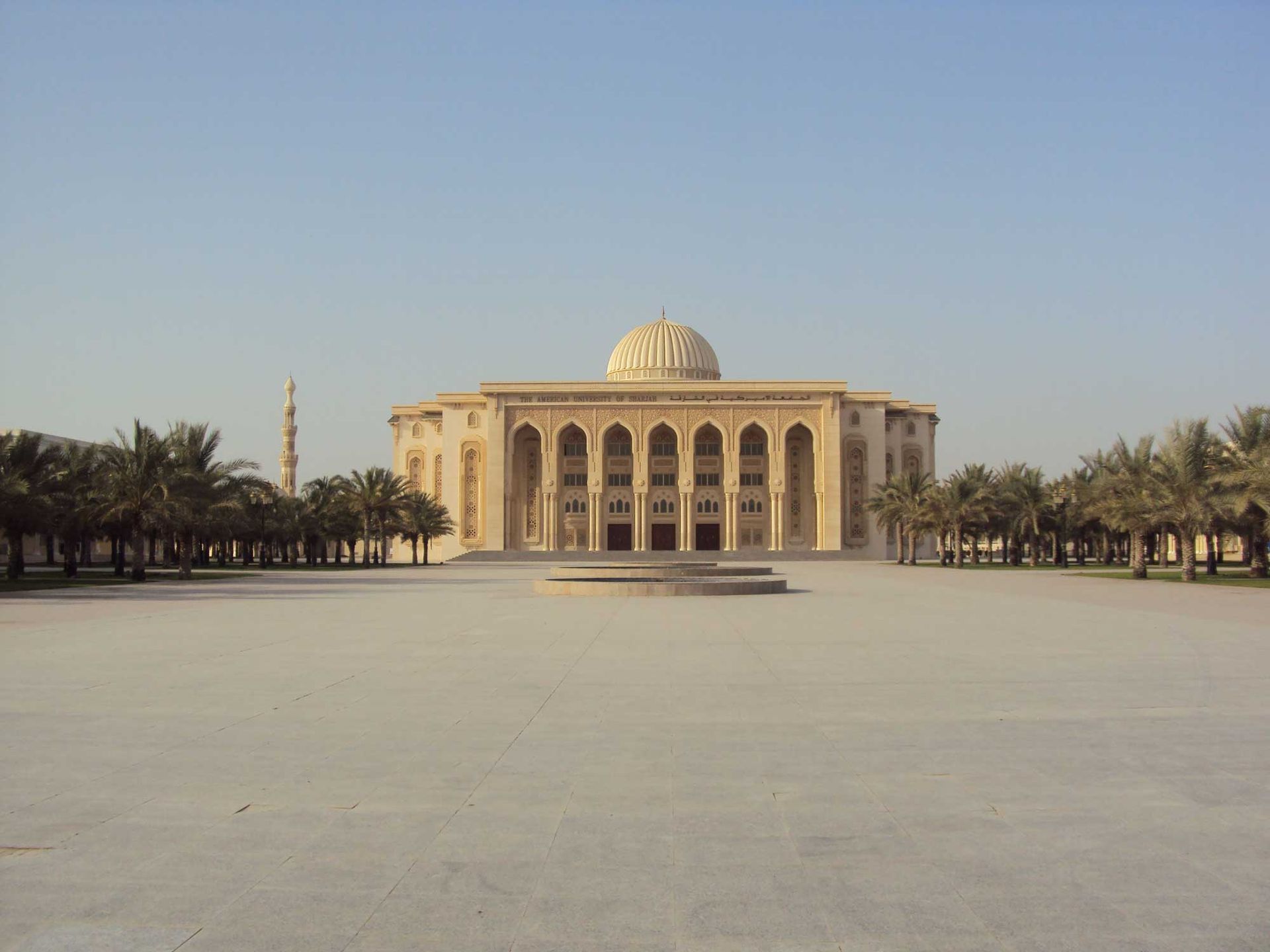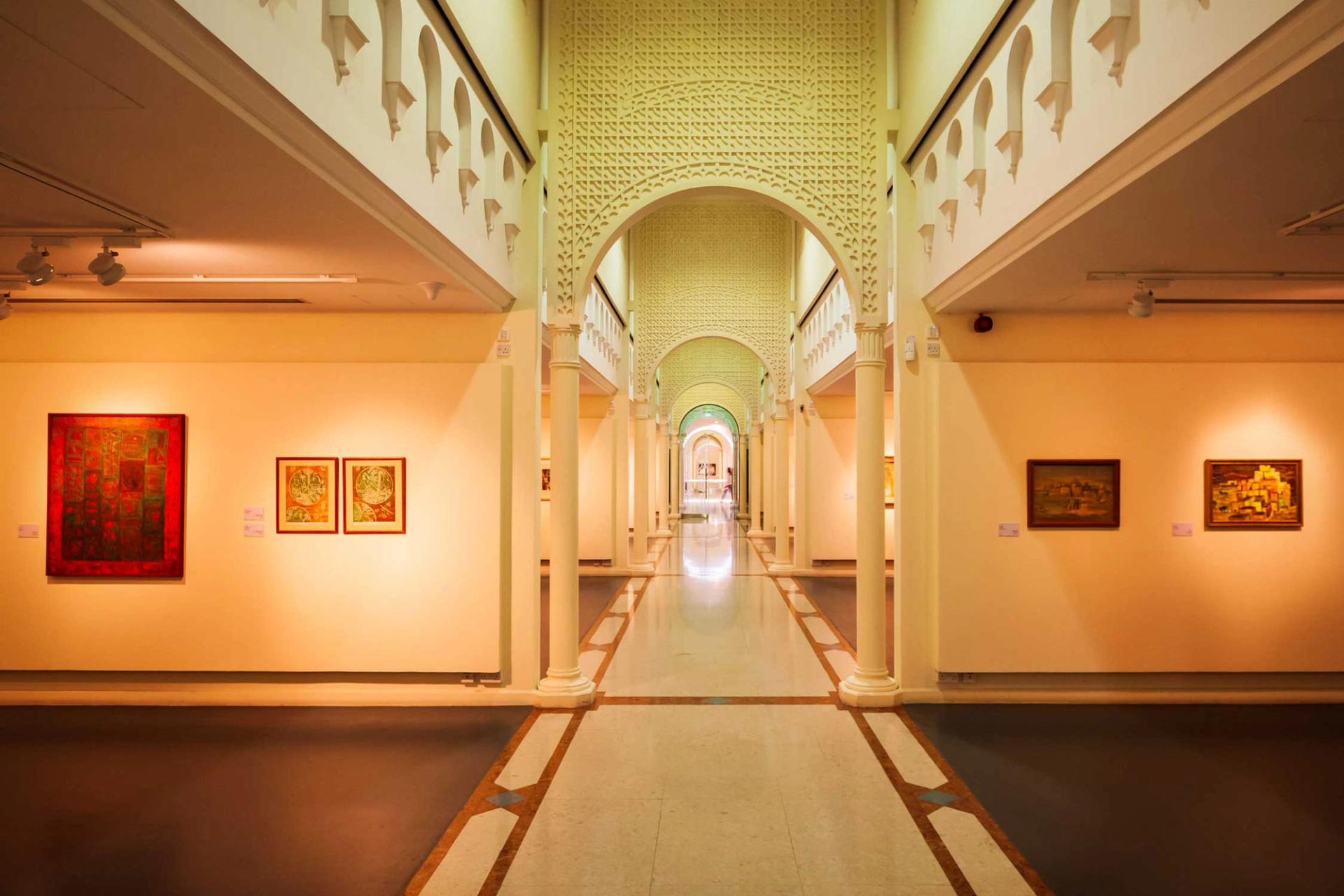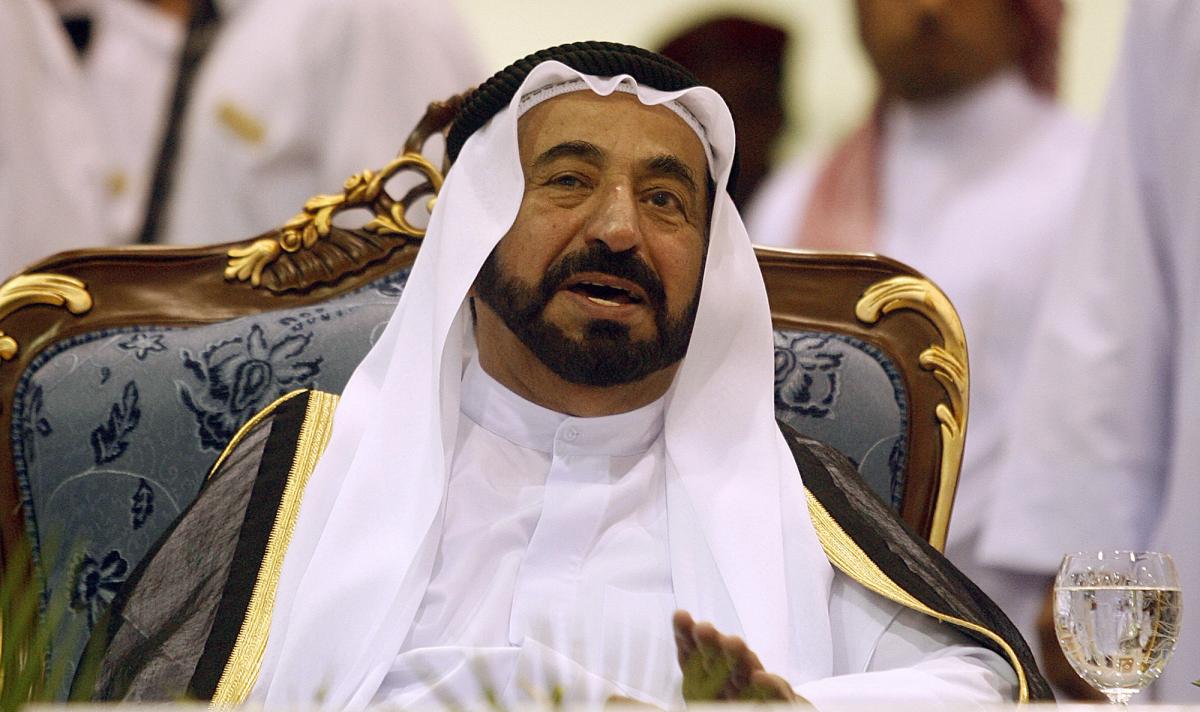Twenty-three archaeological sites. Twenty museums. Ten universities. Three biennials. An Arabic theatre festival. The Arab world’s largest book fair. An Islamic botanical garden. A waste plant designed by Zaha Hadid.
It is hard to convey the depth of investment into art and culture in the emirate of Sharjah without resorting to list-making. But it is very clear where the investment began: Sheikh Sultan bin Muhammad Al-Qasimi.
Since becoming the ruler in 1972, following the assassination of his brother, Sheikh Sultan has become a singular figure in the Gulf, supporting culture and education before it was a priority elsewhere. While Sharjah is well-known on the art circuit for the Sharjah Biennial and the Sharjah Art Foundation (run by Sheikh Sultan’s daughter, Sheikha Hoor Al Qasimi), contemporary art is only part of the cultural remit: it exists among events in theatre, publishing, music, universities and education programmes, as well as projects supporting Arabic-language writing, Islamic art and calligraphy.
“He’s a very strong visionary,” says Aisha Rashid Deemas, the director-general of the Sharjah Museums Authority. “He saw the potential of arts and culture long before anyone else saw it. When others were thinking about commercial development and real estate, he was thinking about arts and culture.”
Sharjah is a less flashy emirate than its neighbour Dubai and has a more visible sense of community. Children play in the parks and parking lots, families picnic on grassy verges, and indoor souqs are still commonly used. It is also a “dry” emirate, which has discouraged luxury hotels and restaurants from setting up shop. This was not always the case. In the 1960s and 70s, Sharjah was the most cosmopolitan of the Trucial States, as the UAE was known. Elegant Modernist buildings along its main drag, Bank Street, welcomed professionals from across the Arab world, many of whom were fleeing instability in their own countries. But the city went bankrupt in the late 1980s, after its banking system collapsed under heavy debts.

Many of the artists, curators and designers who are in positions of authority across the UAE were educated at the American University of Sharjah, founded by the Sheikh
Photo: Amara
Saudi Arabia was among those who came to its help, and it is commonly understood that a condition of aid was greater social conservatism, a direction towards more strict religious adherence that was already widespread in Sharjah and across the Gulf at the time. In 1987, Sheikh Sultan was briefly deposed in favour of his younger brother, though his rule was restored within the year.
Today, at 85, he is a familiar presence at opening ceremonies, moving slowly and carefully through crowds and galleries. He is known to buy work from Sharjah’s exhibitions, and many of the museums that now occupy institutional roles in the emirate began from his own collections. More important, say those who have worked with him, is his genuine seriousness about culture—a key reason art has been able to flourish in the emirate—and his humility as a person.
“He really is a father figure,” says Ulrike Al-Khamis, the director of the Aga Khan Museum in Toronto and the former co-director of the Sharjah Museum of Islamic Civilization. “He’s very genuine, very humble, very wise, very caring. I remember standing in a line for an opening with other officials and dignitaries. He not only knew everybody, but he also asked, how is your mother, or how is your son doing at university? He cares about everyone.”
Museum focus
Most of Sharjah’s cultural offerings date to the 1990s. Its first museum, devoted to archaeology, opened in 1993, the same year as the first Sharjah Biennial. (The biennial was a less curated, more regionally focused affair before Hoor Al Qasimi took it over in 2003.) Seven museums followed by the end of the decade, including the Sharjah Islamic Museum (1996, now the Sharjah Museum of Islamic Civilization) and the Sharjah Art Museum (1997). The American University of Sharjah opened around the same time, as did the University of Sharjah.
Sheikh Sultan also began restoring heritage sites, such as the low-slung buildings dating from the pearl-diving era along Sharjah’s harbour. Now known as the Heart of Sharjah, these are among the best remaining examples of UAE life before the oil boom. And he has been careful to make sure Arabic culture has not been eclipsed, with his popular Sharjah Calligraphy Biennial and the Arabic-language Sharjah Theatre Days, as well as the Sharjah International Book Fair, which was visited by 1.8 million people last year.
“His Highness has worked to preserve the history and traditions of Sharjah, but also went beyond that, into pan-Arab and Islamic culture,” Deemas says. “He always said, when he talked about Islamic civilisation, that it’s not a thing of the past: it is a living civilisation.”
This has also made Sheikh Sultan a quietly political figure. Just as he was an early proponent of cultural investment, he was also an early advocate for decolonialism. He earned his PhD at the University of Exeter in 1985 with his dissertation, “The Myth of Arab Piracy in the Arabian Gulf from 1797 to 1820”. The thesis reorients the conventional history of the British-Qawasim battles (the Qawasim are the ruling tribe of Sharjah, with Al Qasimi in effect the family name) to portray the Arabs not as pirates but as just defenders of their territory. Earlier, in the 1970s, he set up conferences to enable collaboration between African and Arab countries, and he was a vocal supporter of Palestinian statehood.
This last issue remains fraught in the UAE, which normalised relations with Israel in 2020, and suggests the ill-defined course that politically sensitive works of art must chart in the UAE. While Sharjah has historically allowed for a greater level of political discourse in its cultural offerings, there have also been incidents of censorship—most often when high-level Emirati figures deem a work to have gone too far, either in terms of mocking religion, the government, or UAE nationals or its institutions. The most famous of these is the furore over a work in the 2011 Sharjah Biennial, which was deemed to be un-Islamic and anti-government, that led to Jack Persekian being sacked as director of the Sharjah Biennial.
A degree of self-censorship persists, but under Hoor Al Qasimi the Sharjah Art Foundation has also successfully moved the level of politically acceptable discourse, particularly on the issue of the representation of migrant labourers—a sensitive subject elsewhere in the UAE.

Sharjah Art Museum opened in 1997 following a number of other museum openings; works from the Sheikh’s own art collection feature in institutional collections
Photo: saiko3p
Meanwhile, Hoor Al Qasimi’s sister, Sheikha Bodour Al Qasimi, is the head of cultural entities throughout the emirate; she founded the Arabic publishing imprint Kalimat in 2007 and now serves as chairperson of the Sharjah Book Authority and president of the American University of Sharjah (AUS).
Commitment to culture and education
Sharjah’s commitment to culture and education is now intergenerational for the public at large. Most of the emirate’s population has grown up going to museums regularly. Deemas, for example, notes that she understands the museums not only from the point of view of museum practice but as institutions that are part of the fabric of Sharjah. A large number of the artists, curators and designers who are in positions of authority across the UAE were educated in Sharjah, particularly at AUS.
“Cultural institutions in Sharjah have played an important role in transforming the public perception of creative activities—from the idea of these being mere hobbies to these being vital to development of our society,” says Varkki Pallathucheril, the dean of the College of Architecture, Art and Design at AUS. “But I believe the university has played an equal role in this transformation. In the Gulf region, Sharjah is the mother lode of design talent. The university graduates these really exceptional, really bright creatives and they take up leadership positions in the creative economy. They transform their world.”


